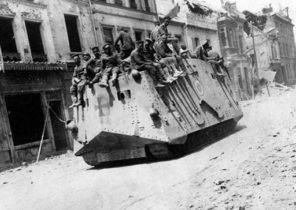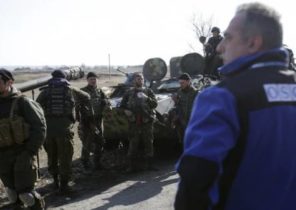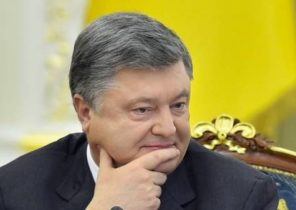
In the fifth season of spy series the Americans (who now is on Fox Crime) Russian agent, who took his American name Philip Jennings, sits in a hotel room in Oklahoma and, sadly looking at the endless plains, says they remind him of his native Russia. His wife, Elizabeth, are typically more serious about his role as a secret agent of the KGB, frowns, and Philip adds: “I don’t understand why we have never been able to grow enough bread to feed its own people.”
This scene takes place in 1984: Gorbachev has not yet come to power, Ronald Reagan actively changing America and the world, and these two spies trying bare hands to hold the dam, which is about to collapse. However, if Philip could read the book “Stalin and the scientists: a history of triumph and tragedy (1905-1953)”, he would have found some answers to his question. After all, the failure of agriculture in the USSR for the most part is a direct consequence of one of the greatest hoaxes of Stalinism: the idea that nature can be converted by the will of man that the living entities can be changed in accordance with the needs — and whims — of the Kremlin, and that genetics is a bourgeois science, moreover, invented by the monk.
The famine that killed millions of Russians and Ukrainians, and often leaning people to cannibalism, was primarily the result of forced collectivization and the “liquidation of the kulaks [the independent farmers] as a class” — what we know from the book of Robert conquest (Robert Conquest) “the Harvest of sorrow: Soviet collectivization and the terror famine” (The Harvest of Sorrow: Soviet Collectivization and the Terror-Famine), the first work devoted to this topic. But when this process was completed when the collective and state farms was finally to grow crops best adapted to the rich soils of Russian and Ukrainian “Chernozem”, the harvest from year to year is getting worse due to the use of incorrect methods. Their initiator was the favourite of Stalin, Trofim Lysenko.
USSR — the first “scientific” state
It is not surprising that the history of the rise and fall of this biologist and agronomist is a significant part of the book “Stalin and the scientists”, the latest work of Simon Ings (Simon Ings), novelist, who is also the cultural editor of the magazine New Scientist. For almost 500 pages he recounts in detail the story of Russian science in the first half of the twentieth century, focusing on the way in which she the October revolution of 1917 started to encourage scientific research, to later put them at the service of the interests of the Soviet state and, worse, to impose an ideological interpretation of the results which science was supposed to achieve.
Then the needs of the Soviet state has resulted in a number of great success — including the development of nuclear weapons and space exploration and contributed to the emergence of great scientists such as physicist Andrei Sakharov, the father of Russian hydrogen bomb, later one of the most famous opponents of the regime. However, the ideological oppression led to great tragedies, one of which is Lysenkoism. Finally, the repressive nature of the regime and the obsession of Stalin wiped out almost an entire generation of scientists and academics in the country, which could boast the largest scientific community in the world: in 1980-e years the Soviet Union had more scientists than the United States and Western Europe combined.
Most of his books Simon Ings devotes exactly Trofim Lysenko and the Russian community of geneticists, with whom he fought and ultimately defeated, ostracized and sent to the GULAG. The choice of the author is clear: among the countless stories that illustrate the complex relationship between the Russian revolution and scientists, this is probably the most vivid example of the struggle between those who wanted to do science, and those who believed that science should have not only “practical way out”, but that can settle scientific disputes, resorting to the most famous of all Sciences in the Soviet Union — Marxism-Leninism.
Political project triumphed in Russia after the Bolsheviks seized power in 1917, distinguished in the first place unshakable faith of its leaders that they are building a state and society, guided not by competing political decisions, and open their historical teachings. The last historical materialism — not only proclaimed the superiority of the Soviet system, but also ensured its conditionality by the historical process that communism was not only a social model — it was the destiny of society and mankind. The Soviet government had positioned itself as “scientific”, that’s why its leaders — Lenin, Stalin and Trotsky wrote extensively about how the laws of “dialectical materialism” must determine the nature of scientific research. Wrote and implemented these ideas in practice.
Mass starvation as the episode of Russian history
In this political context, Trofim Lysenko became a hero without any flaw. First, due to its social origin. Unlike most members of the scientific community in the first years of the revolution, which was formed by immigrants from the social and economic elite of tsarist times — “bourgeois specialists,” as they were called Lenin — Lysenko was the man of the people, of humble origin who have distinguished themselves in their work for all to see in the field, not in laboratories. But if we today perceive it as a half-educated charlatan, the truth is that inspiration for him as for the scientist was the experience of a genius self-taught Ivan Vladimirovich Michurin.
Michurin, who spent most of his studies before the revolution, played a crucial role in the development of the hybridization of species and increase of efficiency of agriculture, creating more productive varieties and is famous for its orchards. Michurin had no proper education — he was primarily a brilliant gardener — however, the inability to scientifically explain how the transmitted output characteristics of them varieties, did not prevent him, as he considered the possible transmission of characteristics from one generation to the next because they were under the influence of the environment in which the plant grows.
In a country that regularly became a victim of mass starvation — it is estimated that in the period between the IX century and the Bolshevik revolution in Russia was 120 periods of famine that devastated civil war that followed the seizure of power by the Communists and accompanied by the fiercest hunger, it is not surprising that Lenin himself observed the work of Michurin and charged to protect a scientist and to support it financially. In the end, Michurin, who had no University education, was elected to the Academy of Sciences of the USSR.
Similarly, Stalin, whose dacha was a private fruit garden, and who ever wished to grow in the icy steppes of Siberia lemons, did not fail to take under his wing a scientist who seemed to have followed in the footsteps of genius. ambitious Trofim Lysenko. The Communists believed that, according to Ings, determination and persistence is able to subdue the physical world of the human will, as it was proposed by Lysenko, who claimed that is able to breed varieties of wheat that are resistant to the vagaries of climate in different parts of vast Russia.
Moreover, Lysenko also believed that the characteristics obtained in the first generation under the influence of the environment can be passed. Thus, he developed the technique of “vernalization”, which consists in the treatment of wheat seeds with cold for their “cheat” and get spring wheat to behave like winter. He assured that through this method crops can feed the country, in constant struggle with food shortages.
The tragedy of Russian genetics
That’s right — without providing significant statistical evidence, relying only on the individual successfully conducted experiments, Lysenko was able to convince Soviet authorities that his methods will put an end to the age-old plague of cyclical hunger. Needless to say, it happened absolutely the opposite: in 1947, in an era when Lysenko was the king and master of biological and agricultural research throughout the Soviet Union, a devastating famine claimed the lives of over two million people. Every third child at the time did not survive to adulthood.
The failure, which ended a decade of investment in research in the field of agriculture, has demonstrated the limitations of the new methods, but even these empirical evidence are unable to dissuade Stalin and his successor Khrushchev, who continued to support Lysenkoism and to scorn to genetics research. Habitual sadness of Philip Jennings, sitting on the bed in his hotel room in Oklahoma, only tells us about this difficult and unwavering in their tenacity heritage, which did not allow the Soviet rural economy to recover from the tragedy that occurred because people from the Kremlin chose a charlatan Lysenko serious work of outstanding scientists. One of them was a geneticist, Nikolai Vavilov, serious and talented person who completed his life in prison in 1943.
The question arises: what else, besides the social origin Lysenko and passion, which Stalin had for lemons, may justify the rise of this pseudo-science and its domination in Soviet science? Perhaps in search of an answer to this question the reader may be somewhat disappointed in the book Simon Ings. It is true that the author in great detail, with a variety of detail and consummate skill of the narrator narrates about the episodes of the long struggle for leadership in genetics, but it does not meet our expectations when he says the fateful role played in these events “philosophers” of Marxism-Leninism of Stalin’s circle.
Ings calls the accomplices of Trofim Lysenko and Isaak Prezent. The last is a biologist and philosopher, in their activities, constantly seeking to the classics of Marxism-Leninism, which was looking for keys to scientific dilemmas, and at the same time shameless and powerful politician. However, the author explains the “philosophical” advantages of lysenkovshina for a regime like Stalin’s, and illusory dreams, like the Soviet. Instead, the author prefers to consider the Stalin — that his own hand was doing amendments in the speeches of Lysenko as “the last European philosopher-king”: such a reading seems at least debatable.
Let’s see, what was at stake. Let’s start with the fact that the controversy was genetics, that is, the laws and mechanisms that allow a species to pass on their characteristics from generation to generation. These laws were discovered in the nineteenth century by a monk who worked with pea crops, Gregor Johann Mendel, and for a long time it was unclear how to reconcile his work with evolution of species, in particular Darwinism. The synthesis of these ideas in the end was made in the early twentieth century outstanding scientists of Russian origin (abroad), for example, Theodosius Dobzhansky, but the Soviet Union was unwilling to accept this concept without a fight. And even if at first Present defended the existence of genes that are passed down from generation to generation, the truth is that it was soon determined that the so-called Lamarckism better “conformed” to the Soviet idea of modeling nature as well as the modeling of man.
From “vernalization” to the dream of a “new man”
Lysenko was Lamarckian, that is, believed in the ideas of the French biologist Jean Baptiste Lamarck, who explained the evolution of species through natural selection — as Darwin, but through the inheritance of acquired characteristics. According to Lamarck, if a living being because of the need to adapt to certain conditions — for example, to pluck the fruit from a higher tree to a greater extent than the previous generation evolves any member, his descendants are born with this more advanced member.
He even suggested that “the law of use and disuse,” according to which living beings during life not lose the desired properties, and develop those which they need — which is true, but their children are born with a set of these new features — which is incorrect, because the phenotype of a species defines its genome, and the genes are not affected by “use and disuse” in the course of random mutations.
However, it so happened that this idea about the mechanisms of evolution to a much greater extent was in tune with the desire of Stalin to transform nature by the will of man, but also the idea of creating a “new man”, a mythical ideal of Communist society, a kind of Homo sovieticus. If by vernalization may “change the properties of the” seeds of wheat, therefore, it was possible to believe that several generations of indoctrination (and the Gulag) will ultimately produce the man who is a Communist from birth.
The present is not missed that opportunity, he is to celebrate the work of one physicist who created the rain with electrically charged evaporation, announced the “planned climate change”, which would allow for a “large-scale attack on the desert” and even “to solve the problem of the harsh climate of Siberia”, it became the main ally Lysenko, demonstrating how their theories are consistent with the works of Marx and Lenin.
Such mixing of politics and science — good or bad — has always cast a shadow over the entire Soviet scientific system. Genetics were persecuted not only because of Lamarckism Lysenko, but also because it was considered a “bourgeois science.” The experts in the field blamed on the fact that they work with fruit flies mutations, easily observed in Drosophila, was at that time one of the main objects of research by geneticists instead of dealing with “practical science” that can solve the problem of hunger in Russia. And even condemnation of such practices as eugenics, which fits the ideas of Stalinism about the ethical (or unethical), it is not due to ethical or scientific reasons, and the fact that it was used by the Nazis.
Physics has survived: the Soviet Union needed a nuclear bomb
On the other hand, the theory of Ivan Pavlov, Russian physiologist, famous for his study of conditioned reflexes on the basis of experiments with dogs who received the Nobel prize in 1904, and never sympathized with the Soviet power, the scientist was 68 years old when the Bolsheviks seized power, liked the regime, and especially Lenin.
It is easy to understand that the idea of being able to control the person’s behavior seemed to the Soviet leaders very attractive, that is why Pavlov could continue its work even in the most difficult times of famine and need. And the worst thing that happened in his lab during this time, so is the death of hundreds of irreplaceable for experimental purposes dogs that were poisoned tainted waste plant of synthetic products.
Among physicists also conducted a fierce debate, but the need as soon as possible to develop their own nuclear weapons, and then to overtake the Americans in the space race eventually provided by the Soviet physicists exceptional financing conditions and virtually unlimited resources.
The Soviet leaders did not like theories like Heisenberg’s uncertainty principle. This refers to the postulate of quantum mechanics that it is impossible to perform simultaneous and accurate measurements at the subatomic level, in other words, it is impossible to observe and measure all at once. And because this inability was contrary to the position of dialectical materialism, according to which all the mechanisms of nature, probably one day will be described using a formula or a mechanical process. That is, contrary to what Lenin wrote in his work with pretensions to philosophical work “Materialism and empiriocriticism”, which was one of reference books mode.
Distrust caused even Einstein and his theory of relativity. According to philosophers, which consisted in the service of the regime, there was physics “idealistic” not complying with the tenets of the founder of the Soviet Union, and physics “Soviet”. Interestingly, their attacks on the theory of relativity was wearing the same character as the attack on Nazi Germany for what it considered “Aryan physics”.
In addition to the ideological wars that determined relations between Stalin and scientists, the entire Soviet system also suffered from fluctuations in political climate. In the first stage, the idea of “scientific” character of the Soviet state met an enthusiastic response from many scientists, and before the consolidation of Stalin’s power and the first five-year plan scientific system had the opportunity to interact with the rest of the world: a committed exchange of scientific articles and journals, and scientists could participate in international conferences and even to study abroad and to travel abroad on exchange.
This period of openness ended when the regime went into isolation, and a General mistrust gave way to cleansing. It is estimated that in the 1930-ies was arrested half worked in the late 1920s, Soviet engineers, and in 1928 has undergone a cleansing of 648 members of the Academy of Sciences of the USSR. His time in prisons and camps had the opportunity to serve some of the most important representatives of Soviet science: for example, Sergei Korolev, chief engineer of the Soviet space program, has long worked in a special laboratory prison, a sharashka — creating the sinister Lavrenti Beria (the life in these institutions describes Alexander Solzhenitsyn in the novel “the first circle”).
The same fate befell Leo theremin, who invented the predecessor of the laser MIC, and of Andrei Tupolev, whose name is known to us by name, developed aircraft models. And Andrei Sakharov in his memoirs recalls that the building where he worked on the Russian hydrogen bomb, was built by political prisoners, which he watched from his window, marching under the watchful eye of armed guards.
More of a tragedy than a triumph
In preparing the book, Simon Ings worked exclusively from secondary sources, using a huge amount of research, access to which came with the opening of the archives. This allowed him to create an immersive and detailed report about small episodes that help to understand the relationship between the various characters and the struggle for leadership in science, and acted as the long arm of politics, and limiting academic freedom and causing the results of the work of scientists.
But the lack of a more comprehensive reading of the reasons why some theories were favored, while others were devalued, not only weak spot of the book “Stalin and the scientists.” Experts on Russian history, such as Simon Sebag-Montefiore, or experts on the history of science such as Loren Graham, also found a number of errors which could have been avoided: starting in the wrong date of birth of Stalin and allegations that Nicholas Bernstein was the inventor of Cybernetics, and ending by saying that Finland was in Russian hands in 1940 after the Russo-Finnish war.
However, this “a story of triumph and tragedy”, which is a very pleasant and easy read — Ings knows how to explain and sometimes even the most complex scientific concepts — once again reminds us of how the Soviet system managed to infect their ideological Bacillus even the area where it would seem, should prevail objectivity. Thus, the tragedy overlaps with the triumph.
We don’t want to say that the Russian science has achieved undisputed success — so, we are talking about the immensity of wasted resources and ideological blindness, which in some areas of knowledge was the cause of the ten-year lag of the Soviet science, of the dire consequences for the economy and the lives of ordinary citizens. Actually this refers not only to the Soviet land, where root crops. Too much of what the Russians have achieved in the laboratory — for example, they were the first in Europe to develop a digital computer — then had no effect on the economy and the welfare of the country.
The result was not only what is being complained Philip Jennings: in the 1980s, the Soviet Union still could not provide all its population with domestic products. The result was that in the era to which the action belongs to “Americans”, the Soviet regime issued its death rattle. And extended just before the fall of the Berlin wall in 1989, although the Soviet Union as a state survived until 1991.







